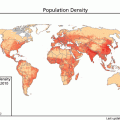Classification: ICD-9 202; ICD-10 B97.33 (virus), C84.1 Sézary disease, C84.5 Other and unspecified T-cell lymphomas, C91.4 Hairy cell leukemia, C91.5 ATL.
Syndromes and synonyms: Adult T-cell leukemia/lymphoma (ATL), T-cell lymphosarcoma, peripheral T-cell lymphoma (Sézary disease), hairy cell leukemia, HTLV-associated myelopathy/tropical spastic paraparesis (HAM/TSP), HTLV-associated uveitis and infective dermatitis.
Agent: Human T-lymphotropic virus 1 (HTLV-1), a type C retrovirus with at least 6 subtypes. The virus was isolated for the first time in the USA in 1980, before HIV-1 (also a retrovirus) was discovered in 1983. Genomically, simian T-lymphotropic virus (STLV) isolates cluster closely with HTLV-1 in the same region, suggesting simian-to-human transmission at multiple occasions.
Reservoir: Human.
Transmission: The virus can be transmitted from mother to child through breast-milk; also through sexual contact, contaminated blood products, organ transplants, and shared syringes during iv drug use.
Incubation period: 20–30 years.
Clinical findings
Stay updated, free articles. Join our Telegram channel

Full access? Get Clinical Tree




